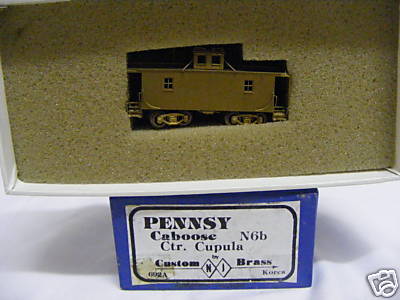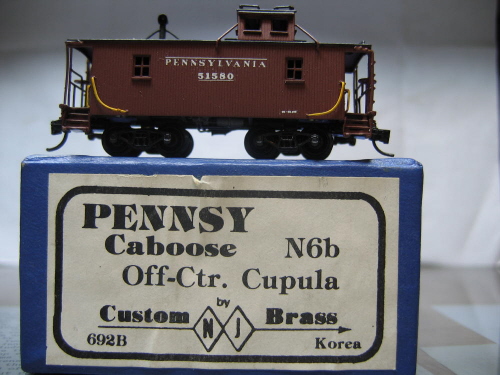



In 1914, new laws were passed in some of the mid-western states served by the Pennsylvania Railroad that required safer cabooses. The railroad responded with the N6A and N6B designs for wood cabin cars (the Pennsy nomenclature for "caboose") using new steel under frames. These two classes were identical except in the design of the cupolas – the N6A had a wider cupola with vertical sides and a shallow arched roof, while the N6B cupola was narrower with sides that tapered in to a more steeply arched roof. While 50 N6A and 100 N6B were built new, most of the cars were made using the bodies of older 4-wheel cabin cars which were placed on the new under frames and lengthened to the 24’ 10 ½" of the N6A and B design. The addition was added to one end of the older cars, resulting in the off-center cupolas on most of the rebuilt cars.
While the Pennsy also introduced the innovative all-steel N5 cabin car in 1914, their need for cabin cars led to the construction of over 1100 of the N6A and N6B cars through 1923. In subsequent years, most of the N6A cars were rebuilt to the N6B design, apparently to provide better clearance in tunnels on the eastern parts of the railroad. By 1957, 867 N6B cabin cars were still on the PRR roster, while only one N6A car remained. The last of the long-lived N6B cars were scrapped in the early 1960’s, and none survived to carry Penn Central markings. Several N6B cabin cars were sold to other short lines in the area served by the Pennsy.